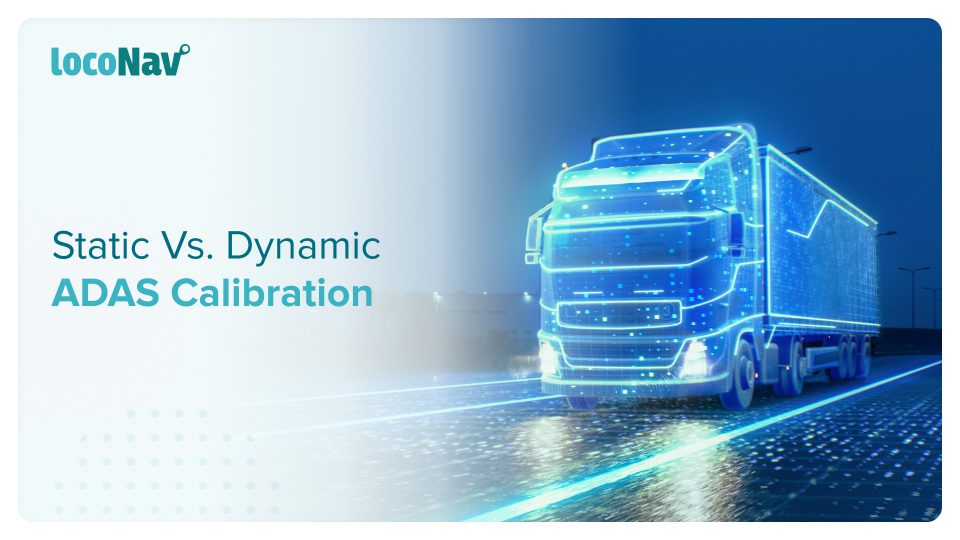

ADAS, or Advanced Driver Assistance System, is a broad term encompassing the plethora of technological upgrades seen in most modern vehicles. ADAS advancements are becoming more frequent in current windscreens and the automotive parts industry. As technology advances, systems now include radar, cameras, computer imagery, sensors, networking, and many other features and components.
Are you perplexed by the differences between Dynamic and Static advanced driver aid systems? Feeling a little befuddled by all the jargon? Don’t be concerned! We’re here to help you sort through the jargon, explain the distinction between dynamic and static calibration, and walk you during your next calibration.
What is ADAS Calibration?
Windscreen ADAS solutions typically rely on a mix of sensors and cameras mounted on your vehicle.
Many ADAS capabilities are delivered by a forward-facing camera positioned underneath the windscreen, typically behind the rearview mirror. When your vehicle’s windscreen is replaced, it’s critical to undertake correct and exact ADAS recalibration to guarantee that all safety systems function properly. If the forward-facing camera is calibrated incorrectly after a windscreen repair, even by a few millimetres, your ADAS abilities can be significantly degraded, putting the occupants of the vehicle at risk. Because each vehicle is unique, manufacturers always specify their own calibration standards.
So, what is static and dynamic ADAS calibration?
Make your business more profitable with LocoNav’s Telematics
Static Calibration
Static ADAS calibration, as the name implies, takes place on a stationary vehicle; no driving is required. Instead of a handheld device, everything takes place in a specialised workshop with a plethora of very sensitive technology to evaluate each component or feature and then restore it to optimal operation.
Dynamic Calibration
Dynamic ADAS calibration is also called mobile calibration. It uses a hand-held device that is connected to the vehicle’s systems. The vehicle is then driven a predetermined distance at a predetermined speed in ideal weather conditions. The distance and speed will be specified by the vehicle’s manufacturer in order for the system to adjust to normal road conditions.
What Is The Key Difference Between Static And Dynamic Methods Of Calibration?
Setup Method
- Static calibration is done while the vehicle is parked in a store.
- Dynamic calibration is performed while the vehicle is being driven.
Testing Tools
- In static calibration, the technician will determine the thrust line and position the vehicle in front of the ADAS gear. Various ADAS equipment employs an array of targets (according to OEM specifications) that the instrument can read in order to correctly recalibrate.
- In dynamic calibration, the specialist will drive the vehicle to accurately reset the camera, radar, or sensor depending on the device requiring calibration. The technician must normally drive on a straight route at a certain pace to calibrate the cameras. Visible lane markers and clear weather are also required for dynamic calibration.
Sensor Support
- When the automobile is stopped, it checks that the camera’s field of vision is at the right angle and that the sensors are working properly.
- A number of ADAS sensors are included in modern automobiles, albeit not all of them require calibration. Some of the most common ADAS sensors that require dynamic calibration are steering angle sensors and rear radar sensors.
Processing Time
- Since static calibration is done in the workshop, it takes a comparatively smaller amount of time. It may take anywhere between 1-2 hours depending on the level of calibration needed.
- Dynamic calibration takes slightly longer since it is performed while driving. It may take anywhere between 2-3 hours depending on the level of calibration needed.
How effective is universal calibration?
Universal calibration combines static and dynamic calibrations to offer the greatest grade of calibration for your vehicle’s ADAS. Static repairs are done in-shop. Targets, lasers, radar, reflecting cones, scanning equipment, targeting, and other methods that may be tested while an automobile is stationary are used in this sort of calibration. On the road, dynamic calibration is performed. To restore the function of the ADAS sensors, the vehicle is driven at specific speeds and conditions.